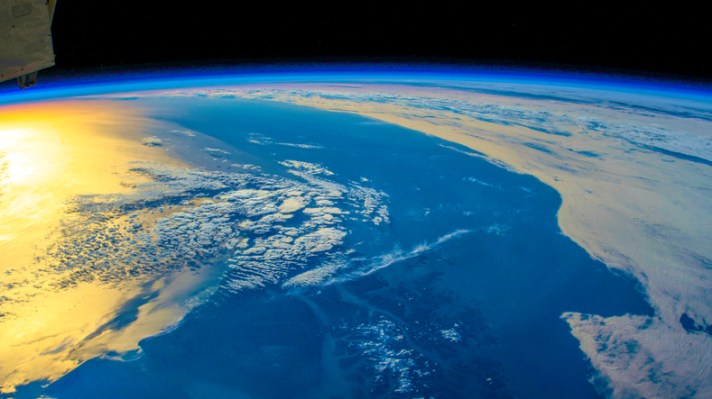Understanding the opportunities available in the space industry — especially for early-stage companies and new founders — isn’t easy.
The pool of people who have deep aerospace technical expertise isn’t huge, and like any community that requires a high degree of specialist knowledge, it’s a tightly-knit field that relies on social connections. But space is increasingly opening up, and we’ve already reached a point where the most valuable new entrants might come from industries that aren’t specifically aerospace or aerospace-adjacent.
In fact, we could be reaching a stage where the parts of the space industry requiring actual rocket scientists are more or less saturated, while the real boon is set to come from crossover talent that develops new ways to leverage innovations in other areas on space-based operating platforms.
“We have enough low-Earth launch vehicles, we have enough rockets,” Bessemer VP Tess Hatch told me in an interview at the FAA’s Commercial Space Transportation Conference last month. “In 2020, we have even more coming online and a lot of the ‘fantasy’ ones [an industry term used to describe spacecraft that have been conceived and designed but not yet flown] are planning to launch, and I think maybe one of them will come to fruition.”
Hatch says she still sees much of the demand side of the industry cluster around existing and proven suppliers, even if new entrants, including Astra and Firefly, actually begin flying their rockets this year, as both have been planning. Companies like Rocket Lab (in which her company has a stake) will increase their volume and cadence and benefit from having a proven track record, taking up a lot of the growth in launch vehicle demand. “I don’t think there’s room for any more rockets in the industry,” she said.
Instead, Hatch is looking to payload variety and innovation as the next big thing in space tech. Satellites are becoming increasingly commoditized, and companies like Rocket Lab are looking to take this further by providing a satellite platform (Proton) as part of its launch offering. There’s still immaturity in the small-satellite supply chain, which is what led small-satellite operator Kepler to build its own, but the bigger opportunity isn’t in building satellites — it’s in equipping them with new, improved and radically redesigned sensors to gather new kinds of data and provide new kinds of services.
“Historically, the only two sensors entrepreneurs have put in and utilized on CubeSats have been Earth observation: cameras and cell modems or communications,” Hatch points out. “In 2020 I really, really look forward to and hope to see different, new creative types of sensors that are utilizing low Earth orbit for benefits back on Earth.”
While she said coming up with what those sensors are is the job of entrepreneurs, not investors, she did offer comparable examples that start to hint at what’s possible. These include functions like radio frequency spectrum-mapping and methane leak detection from space. Earth-observation satellite operator Spire has unique sensors, including AIS (automatic identification system) for tracking at sea, ADS-B (automatic dependent surveillance – broadcast) for air traffic tracking and GPS radio augmentation for both monitoring and predicting weather.
“Weather is a huge industry — think about the potential for how bad our iPhone app weather [accuracy] is at the moment,” Hatch said. “Then just imagine all of the business use cases, planning flights and trips and all these things based off of weather patterns for fuel consumption and savings. That, I think, is a huge area for for space, space resources and different types of sensors.”
One tangible recent example of how space-based technology can be used to improve weather predictions in an everyday way here on Earth is NASA’s mission to launch a new air-quality measurement sensor in 2022. It’ll be attached to a Maxar satellite and should provide more frequent and accurate updates as to the levels of ozone, nitrogen dioxide and aerosols in the atmosphere.
Weather is just one relatively easy-to-identify area of possible improvement. Hatch points out that a lot of the ways in which space-based tech have been truly revolutionary are relatively invisible now. The next big innovation is likely to have the same kind of tremendous, taken-for-granted impact — even if we don’t know exactly what it will be just yet, she said.
“I think we don’t realize how often we use space in our everyday lives,” said Hatch. “Every time we swipe a credit card; every time we need to get to our next destination; every time we turn on Sirius XM radio or DirectTV — all of these are our satellites.”
Even without breaking new ground, each of those categories is ripe for innovation. Satellites that enable these services are located in geostationary orbit, and as with communications, there may be opportunities to create efficiencies via low Earth orbit constellation models or new and improved spacecraft. These advances could change the economics — as well as the nature and quality — of existing products.
For right now, this is the kind of space business that is in demand when it comes to Hatch’s interest and her investment focus at Bessemer, which covers all kinds of deep tech. Sensors, whether improved versus the legacy variety already on orbit, or being used in space for the first time, could be the next big reason to look skyward.
“I really do welcome anybody with the creative sensor in space,” she told me. “Someone that’s not doing a camera or a cell phone, or communications on a satellite.”
